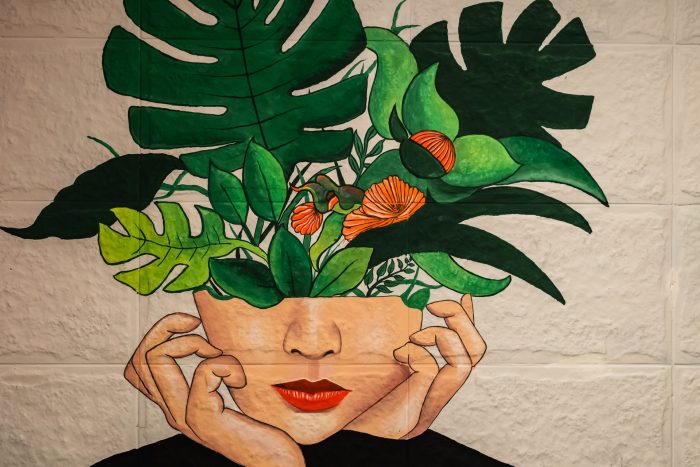View this post on Instagram
Hands up if you’ve ever tried to kill yourself.
Give me a nod if you came close.
Planned it all out in your head?
Okay, how about just the odd pedestrian suicidal thought?
I know—here we are, two minutes away from the holidays, and this guy’s idea of Christmas cheer is a thought piece about suicide. Perhaps it’s too much?
Alas, due to recent events, I really can’t help myself. So while many are anxious to know what shiny gifts will be under the tree this year, I’m pondering the transformational gift of empathy.
You see, according to the World Health Organisation, more people die by suicide than in natural disasters and conflict combined. So, to unpack that, post-traumatic stress disorder (PTSD), depression, anxiety, despair, and obsessive-compulsive disorder (OCD) are killing more humans annually than war, tsunamis, earthquakes, tornadoes, and all the other force majeure one might imagine if one had a mind to do so.
Here’s another Christmas stocking-filler for you: almost 800,000 people kill themselves every year; that’s one suicide every 40 seconds. These are just the ones we know of; it’s estimated that failed suicide attempts may well eclipse five times that number. Read that again. Perhaps, if you’re like me, you’ll take a few moments to breathe and consider the myriad aspects of that painful truth. If you want to talk about a pandemic, this is an excellent place to start.
Now then, as it transpires and contrary to popular belief, suicide rates don’t go up around Christmastime. But then, does that matter? After all, suicide’s for life, not just for Christmas. Isn’t one death every 40 seconds bad enough already? Perhaps you’ve already been touched by suicide, or for you, suicide is just an accepted part of life. Maybe, as it’s never affected you directly, it doesn’t even feature on your radar.
Nevertheless, you might be interested to learn that suicide is now the fourth leading cause of death among 15 to 19 year-olds. So it would sadly appear that our children are killing themselves at a record number, and there are no social markers to demonstrate that things are about to improve. Quite the opposite, in fact. While I’m conscious these words might sound a little ranty, rest assured I’m not questioning your empathy; this is a societal problem after all, and the collective is to blame. But then, aren’t we the collective? Isn’t it the case that if we change, others will change around us, and so on?
Just as with suicide, too few people want to talk about mental illness, despite at least one in five of us suffering and a great many more arguably experiencing more subtle mental afflictions. I grew up likely the same way as you. If someone was “sick in the head,” they were to be chastised, pharmaceuticalised (I made that word up, by the way, because it rhymes), avoided, or in worse cases, locked up for their protection.
Growing up, I had no idea about mental illness, despite hilariously suffering from it rather profoundly, I was not given the tools to recognise it. None of us were, and even now, we simply don’t realise that the lion’s share of us all experience trauma at some point—be that neglect, abuse, or physical and mental damage caused by a singular event. All of this trauma is embodied, carried somatically or mentally. While such a thing can appear invisible, it is not. And it rarely disappears of its own volition.
Now I’m painfully aware that this article is rather devoid of festive cheer. Please stick with me; there are Christmas lights at the end of this wordy tunnel. Promise.
My sad old friend
Out of the blue, after almost eight years, an old friend contacted me this week to tell me that my well-being podcast stopped him from killing himself a couple of months ago. On the one hand, this information was terrific news, as the whole point of the show is to help people. On the other hand, I couldn’t help but get a little nervous about maintaining editorial standards in line with the ebb and flow of his mental health. No pressure, hey?
Seán (not his real name) reached out because he knew that I knew how he currently feels. You see, back in 2015, in a deep depression, with a bottle of gin in my belly and a loaded shotgun in my mouth, I was seconds away from taking my own life. It was my beagle who stopped me, would you believe? That’s another story for another day, though.
Just like Seán, I’d suffered from alcohol and drug addiction, depression, narcissistic and self-destructive behavioural traits, as well as a healthy dose of self-harming. I was a high-functioning tram-smash, bizarrely capable of running a successful business while convincing friends, colleagues, and family that I was okay. We can likely agree, though, that putting a loaded shotgun in your mouth after downing a bottle of neat gin is a country mile from the kind of behaviour demonstrated by someone who is okay. I’ve been very open about my story, sharing my journey of self-realisation, healing, and awakening. Thankfully, Seán heard my podcast and read my words here on Elephant Journal.
Seán’s in a small, rural Irish town. He’s a big bear of a man who stitch-by-stitch is slowly falling apart in front of his community. It’s a neighbourhood that doesn’t air dirty laundry, where people don’t talk about mental health. They don’t talk about it because silence surrounding such taboos is culturally ingrained. And perhaps because it’s a sign of weakness—a stigma that indicates a person ought to be avoided. All in all, it’s safe to say that if he continues on his current trajectory, things might well end tragically for him.
So what shall we do?
Now, there’s a question: what should we do? Because this is a problem that we can only effectively address as a collective. I believe that us humans have a beautifully innate tendency toward compassion. Mind you, we also do apathy well when it suits, don’t we?
When we know someone’s in trouble, we want to help them. So the question is: since we now know so many people are in trouble, how do we find out where a person is on the scale of one-to-suicidal? I mean, that’s got to be a pretty tricky thing to establish. The truth is that we can’t always know.
Broken folks
For years, I fooled a considerable sway of people into believing I was okay. Or did I? You see, Seán and his town are not unique. The world over, there are broken folks within communities who are emotionally underdeveloped through no fault of their own. And whether they know it or not, this underdevelopment has social symptoms. It could be anything from excessive drinking or substance abuse to violent mood swings. Overworking, avoiding social situations, eliciting a reaction from people, inducing negativity, where reaching out perversely transmutes into lashing out, much to the confusion of many. Or contrastingly, such folks are overtly sociable, capable of utilising phenomenal acting skills as they wear a brave and extroverted face, smiling as all the while, they suffer in silence.
Those of whom I speak may be emotionally underdeveloped while, on the flip side, often possess incredible and highly complex defence mechanisms due to their prolonged exposure to fight-or-flight mode. Above all—in my own experience, at least—I can attest that the folks in question will almost always attract a great deal of drama. By them assuming the role of victim, persecutor, or even rescuer, they will magnetise drama as an opportunity to hone their fight-or-flight skills wherever possible. There’s a comfort in it.
The gift of empathy
So, to recognise some of these traits is, perhaps, to put ourselves in a better position to help should we so wish. From my perspective, it is abhorrent that we’ve allowed our society to crumble to such a point that someone commits suicide every 40 seconds. I’m not judging the state of where we are; it is what it is. Where we are is in the present moment, with the ability to change everything in a heartbeat. I’m also not suggesting that we all suddenly leap into extra-vigilant-suicide-watch mode. Some of these misguided souls conceal their dark thoughts with the comparative expertise of a highly trained intelligence officer and are way beyond seeking care.
But for all those who do not want help, there’s an equal number who so desperately do. They just don’t know how to ask. And in such cases, it is incumbent on us—the lucky ones—to look for the signs and, instead of judging a person by their “bad” behaviour, perhaps we can pause for a moment, observe that judgement, and ask ourselves what’s behind that behaviour? What has caused them to express themselves in such a way? In doing so, we might well realise that whatever their story, it didn’t happen overnight, or even over some weeks or months. Recent events may have triggered their behaviour, but in all likelihood, they’ve been carrying the source code of that sadness for a long time. So, in us taking the time to understand this, are we giving ourselves and this person a wonderful gift?
The journey of a thousand miles
So the good news is that my buddy had the courage to reach out. As he expressed his thoughts and feelings with impressive vulnerability, we talked at length about the myriad options available other than to pull the plug on a life filled with potential. I’m grateful to him for seeking care and that I could hold space for him. Even though he’s on the first step of a thousand-mile journey, he’s met with a therapist, and there’s a good chance he’ll check into a rehab. He’s finally accepted that he’s powerless over alcohol and drugs in his current state. He’s accepted that his problem isn’t really the drink and drugs now adversely affecting his life, but symptoms of something more profound—namely childhood trauma. He wants to hurt himself and others yet fully realises that is not right thinking. He’s acknowledged that he needs help learning new tools to cope with and countermand these stubborn synaptics. Seán has finally accepted that he wants to heal, and while he likely doesn’t see it, he might be giving himself the best gift possible through this realisation.
Lights and tunnels
See, I told you this story had a happy ending! Or at least a happy beginning. For as Zingdad says, “All endings are happy. If you are not happy, then is it not the end. It’s just some misunderstood pause somewhere in the middle.”
So, thank you for reading. Far from being a rambling rant, I suppose this is more of an open invitation. If we as a collective began to consider the real gifts we all have so readily available, and perhaps try to be a little more present around others and see past what we want to see —what is convenient for us to see in them. In doing so, we might also manage to see past what they want us to see—as inconvenient as that may be for them as they try so desperately to protect themselves. And in that act of awareness and observation, underneath the collective layers of ego, we might catch a glimpse of a person in pain, whose life could be inextricably transformed as a result of our interaction, empathy, and inquiry. And so, we do our part to ensure that fewer people die needlessly next year by suicide, albeit one exchange at a time.
Change is the one universal constant. We can all surrender to—and flow with—impermanence at any given moment. And so things don’t have to stay the same. They really shouldn’t. We can change how we view mental illness, suicide, and of course, how we interact with one another. Since life is the most precious gift of all, surely we’re performing a miracle if we can save even one?
Well, I don’t know about you, but that’s just about the best gift I could ever give.
Postscript
If you are considering harming yourself, please know that you are loved. It might not feel that way, but even if you’re right and no one in your life loves you, let’s start with the basics. I love you. I know that your life matters, and I know what wondrous adventures lie on the other side of the high, dark wall you currently face. All you need do is have faith and reach out to someone—anyone—so that you might slowly but surely begin that thousand-mile journey for yourself. Trust me when I tell you that it’s worth every step. And there will be people all along that path, ready and willing to hold space for you.
And to the survivors: big love. Keep doing what you’re doing. Keep being.
~





Read 1 comment and reply